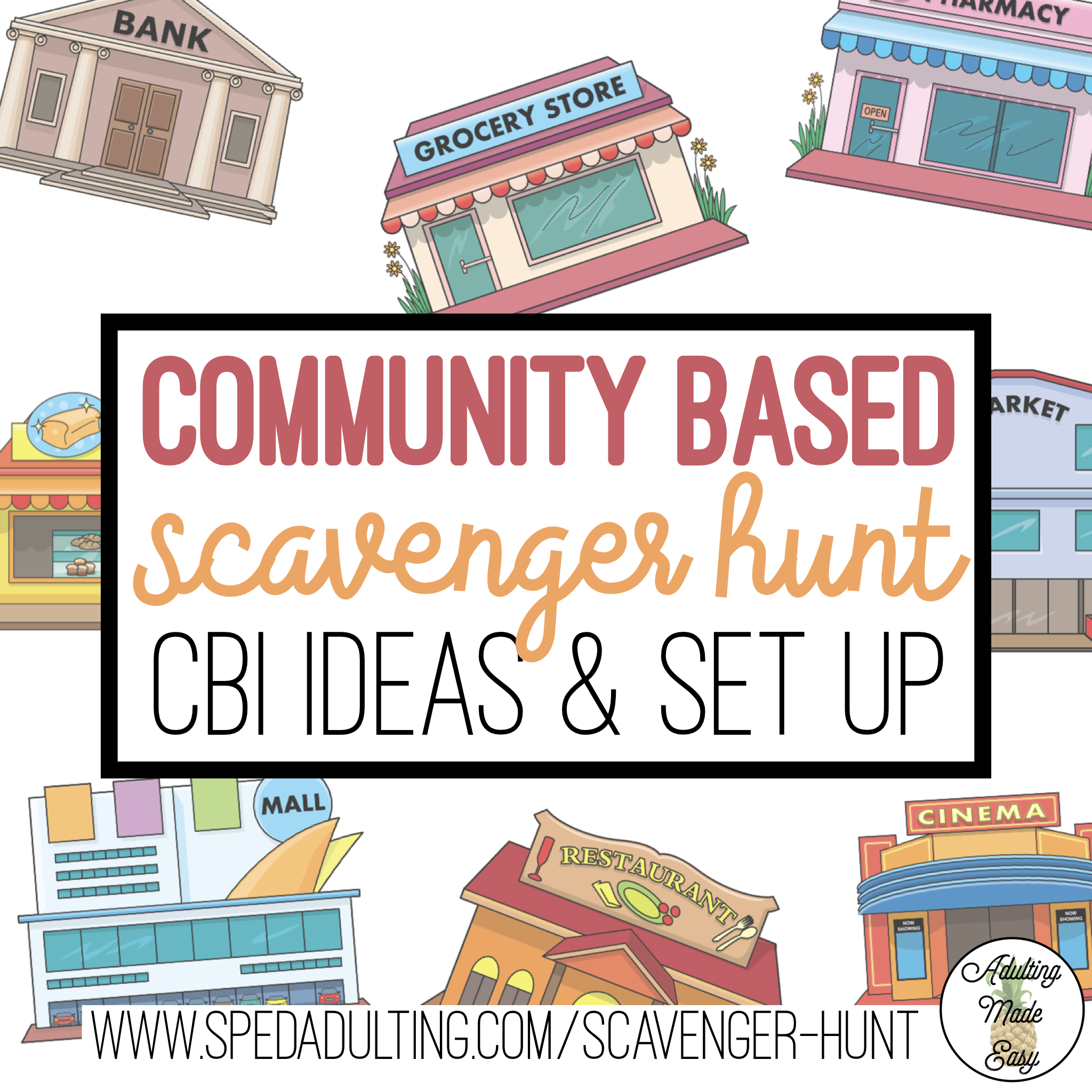I remember going to stores as a child and unless my parents told me I could pick something out or gave me money to purchase something, I wasn’t very interested in being at the store. Don’t even get me started on Home Depot…it was the most boring place in the world for me as a child, I dreaded it! Funny thing now that I have a home, it’s one of my favorite stores to go to.
Spark Interest
Something that probably would have sparked my interest would have been a scavenger hunt. What better way to practice shopping and life skills than to do a scavenger hunt! Scavenger hunts create opportunities to practice many different skills towards independence, not to mention they are fun.
Scavenger hunts can be educational for a number of reasons:
-
Encourages active learning: Scavenger hunts require participants to actively engage with their surroundings, searching for clues or items. This kind of active learning can help reinforce important concepts or ideas, and can be especially effective for kinesthetic learners.
-
Teaches problem-solving skills: Participants must use their problem-solving skills to decipher clues or figure out where to look for hidden items. This can help develop critical thinking and analytical skills.
-
Promotes teamwork: Many scavenger hunts are designed to be completed in teams, which can help develop collaboration and teamwork skills.
-
Provides an opportunity for exploration: Scavenger hunts often require participants to explore new places or learn about new topics. This can be a great way to introduce learners to new ideas or spark their curiosity.
-
Makes learning fun: Scavenger hunts are often designed to be enjoyable and engaging, which can help make learning more enjoyable and memorable. By making learning fun, scavenger hunts can help create positive associations with the material being learned.

Students can practice:
matching
navigating a store
reading aisle signs
finding specific aisles (by number)
finding specific categories (by product type or food group)
shopping etiquette
price identification
comparison shopping
money math (adding up prices)
dollar up method
making a purchase
How to Implement
Doing a scavenger hunt can be as easy as writing down item names on a piece of paper, but of course in reality, it’s never that easy. Many special education students are successful with differentiated visual support in order to master many of these skills! Here are some tips and ideas to create free scavenger hunts:
Simply write a list of products (for readers)
Cut and paste a list of items you find in a store ad
Google images of specific items
Pecs or AAC device images
Print out a recipe
Take a picture of items you already have and find the same item or something similar
Doing a scavenger hunt at your local grocery or hardware store is one of the easiest and fun interactive community-based instruction activities you can do, but you can essentially do a scavenger hunt almost anywhere! As long as you know what types of things you would see at a business (eg. Find packing tape at the post office), then it is pretty easy to make a list. Another fun one is finding specific store at your local mall.
Don’t have time to prep visuals? Check out my differentiated scavenger hunts:
Want more ideas for community-based instruction? Check out my blog post:
Thanks for reading!










